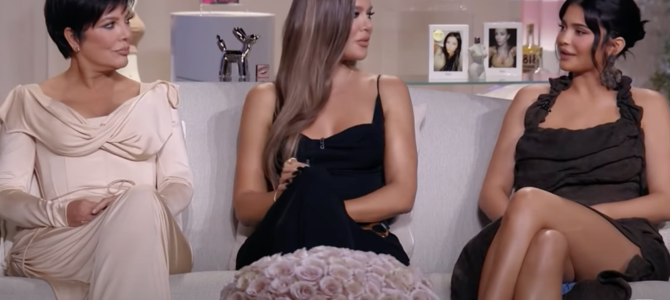On the eve of the show’s finale, one critic wrote that “Keeping Up With The Kardashians” ultimately became “tangential” to the family’s fame. With the ratings having peaked years ago, that’s impossible to deny.
As the series ended, Kim constantly broke the fourth wall, explicitly constructing on-camera boundaries when a conversation got too intimate. That illusion of total intimacy was always a facade, clearer in the early “Brady-Bunch” days of their bright sitcom-style show, then less obvious as fame caught up with the Kardashians and demanded the appearance of genuine insight into their personal dramas and tragedies. It was never “Big Brother,” nor was it supposed to be.
Early episodes captured a big family in a small home, with warm lighting, formulaic plots, and a tight-knit dynamic. The show’s success played out on-screen, as the family was captured in their increasingly expansive, sterile living spaces, struggling with addiction and kidnapping and divorce and fertility and gender. Ratings went down. Followers went up. The show aired while mass media splintered into online niches.
On social media, the family wields even more control over its image — and the business of its image. Initially derided as the family “famous for being famous,” they now sit atop a mountain of influencers who fabricated their way to the same kind of notoriety, faking it until they make it. When they make it, it’s as peddlers of a cheap aesthetic rooted in nothing other than materialism.
For all its frivolity (Todd Kraines, jail selfies), “Keeping Up With The Kardashians” captured both the arc of American fame and the creeping pains of modernity. The sugar high of meteoric celebrity gave way to rolling tragedy, to mansions that house rich families splintered into their sterile shelters by broken relationships. Like many of us, they’re tortured by social media, but strategically game it to soothe their pain with material comforts.
But as America’s birth rate slows and femininity fades, the country’s first family has famously multiplied. Their relationships and marriages mostly fail, but their purpose and solace are found in their many, many children. And they’re eager, attentive mothers.
That is to say, they’ve grappled with the rapid swirl of civilizational changes not unlike the rest of us, representing the duality of our culture’s growing hunger for tradition and growing reliance on the fleeting comforts of materialism.
You can see it in their plasticized bodies, cartoonishly sculpted to emphasize feminine features they often drape in the inelegance of postmodern fashion. As KUWTK got longer, it got darker. Flickering warmth came through in the family’s best interactions, but still stood in contrast to the rest of the show. The family also occasionally turned to faith, attending services and posting Bible verses. Kanye West brought Kim and their children along for his remarkable journey to traditionalistic Evangelical Christianity. But their union didn’t last.
The show ultimately lived up to its name, encouraging America to keep up with the styles and successes of the chaotic Kardashian family. As mass media died during the course of the show’s run, they learned to own new media, finally taking their content to a streamer. But they’re reacting to trends even more than they’re shaping them, making their journey a representative one.









